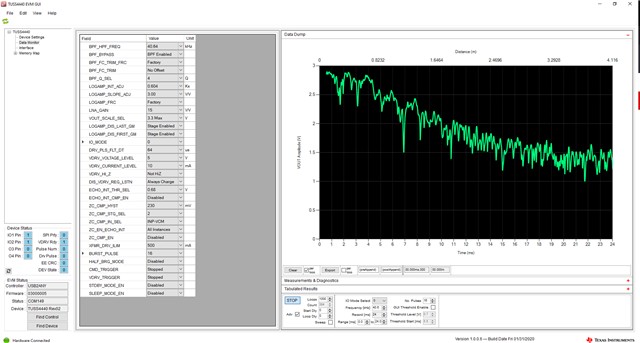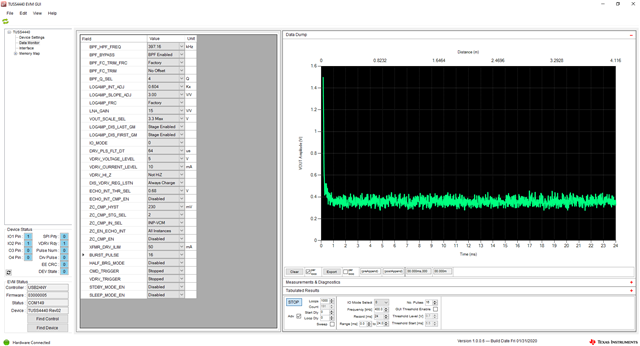Other Parts Discussed in Thread: TUSS4440
Tool/software:
I am using the development kit BOOSTXL-TUSS4440 with the TUSS Generation III EVM GUI application.
When I try to read the feedback signal in rubber, all I get is noise, and I cannot reliably identify the echo peak. In air (with a 40 kHz transducer), I am able to detect distance measurements up to about 3 meters, but beyond that the signal is too noisy.
My goal is to measure the thickness of a rubber layer that has a metal plate on the opposite side.
So far, I have tried different frequencies and transducers (40 kHz, 255 kHz, 400 kHz). I also increased the output voltage to improve the signal-to-noise ratio, but without success.
My board configuration follows the datasheet recommendations. The J1 and J4 connectors were calculated from Cinn and Cflt values provided in the datasheet.
Here are example graphs of what I see:
40khz

400khz

My question is: could this be a configuration issue preventing me from correctly reading the ultrasonic echo, or is it expected behavior with rubber material?

